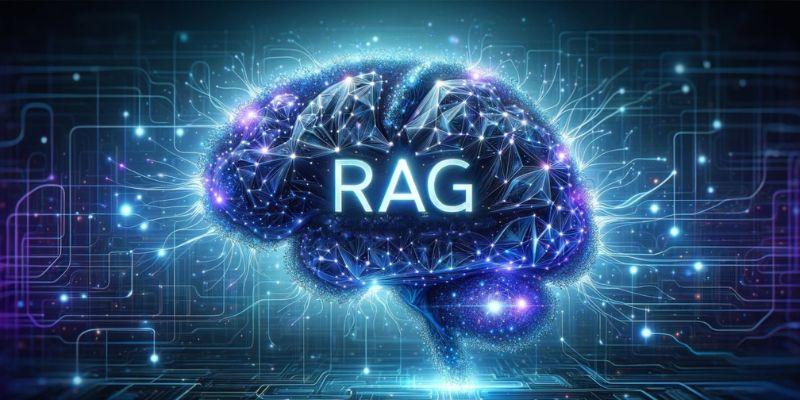Graph data structures drive social networks all thru recommendation engines but have a significant challenge: their storage efficiency. Clique-based compression provides a game-centric solution, by using natural clustering in real world graphs offering compact storage requirements and also supporting a quick query response. This innovative method enhances scalability for massive social networks, knowledge graphs, and more, cutting costs and boosting efficiency.

Advanced applications generate massive graph data. The social-graph on Facebook consists of billions of nodes, and trillions of edges. Hundreds of billions of facts are stored in knowledge graphs such as those of Google. These large buildings pose extreme storage problems.
The adjacency list representations used traditionally, solely store each edge be it on its own and as a result, such redundancy leads to considerable wastage. This redundancy is wastage especially when all nodes facilitate a large number of common neighbors- a pattern known as clustering. An example involving 10 very well-knit nodes may need a storage of at least one confined to 90 separate edge associations even when the connectivity topology could obtain a more succinct list of connections.
It is not only memory consumption. Inefficient storage also affects query response, cache performance, and expenditure of network transfer in distributed systems. These problems get worsening with the expansion of the graph which is growing exponentially.
A clique represents a subset of nodes where every pair is directly connected. Think of a group chat where everyone knows everyone else—that's a clique. In graph terms, a clique of size n contains exactly n(n-1)/2 edges, forming a complete subgraph.
In real-world graphs there are lots of cliques and almost-cliques. Friend groups of social networks, functional complexes of protein interaction networks, and tightly linked clusters of content of web graphs are the analogs of each other. These naturally existing patterns give way to opportunities of compression.
Instead of encoding the edges one at a time, clique-based compression finds such dense subsets of the edges and then encodes them more compactly. A 6-node clique which would take 15 separate edge entries can be encoded into one clique object with enormous space savings.
The compression procedure has three principal phases: detection, encoding and optimization in storage.
The first process would determine maximal cliques; which would be the largest cliques all as possible and could not be extended by any addition of a node. There are a number of algorithms to solve such a task but the computation complexity varies dramatically.
Bron-Kerbosch algorithm is the state of the art in exact clique enumeration. It also lines up the searching space with three categories specifically the candidates that may move the existing clique, those in the existing clique, and the processed nodes. It is exponential in worst-case, but it works well on real world graphs when sizes of cliques are reasonably large.
In the case of huge graphs, approximation algorithms will be more beneficial. All these make large cliques in a short amount of time, even though they do not necessarily make optima. The offset between compression ratio and computation time will become a critical issue to a practical implementation.
Upon window clique identification, the compression system should determine how to encode them. Basic methods record every clique by listing node identifiers, although more advanced methods are able to provide greater compression ratios.
Hierarchical encoding is more efficient in the deployment of far-away clique structures. In the case where overlapping between the cliques is high, redundant storage of identical elements can be avoided by the use of more expertise in the data structuring.
In other systems, hybrid strategies are employed whereby clique compression is only done to large cliques, but the sparse areas retain traditional edge lists. This is a tradeoff of compression advantages versus encoding overhead.
The last stages of the process reorganize compressed data into the optimal access pattern. Storing clique information may be as a separate data set, even disregarding residual edges, or as an integrated system at both compressed and uncompressed formal levels.
Index structures are especially significant. Fast clique lookups support the fast neighbor querying without complete decompression. A well-thought index structure can make sure that compression does not impair query performance.

These benefits are far-reaching than just space savings but storage reduction is by far the most apparent of all such benefits.
Graph characteristics are important in determining compression ratios, and dramatic decreases are the norm. Strongly structured social networks may take up a savings of 50-80% of space. Even slight increases are expressed in large scale systems in terms of significant cost-saving.
Most effective compressions happen in dense regions, though even sparse graphs can have sufficiently much clustering to justify the method. The trick is in brainy hybrid techniques which can selectively use compression.
Better locality of reference may be found in represented forms of compressed data. Related nodes organized as cliques are stored in groups and enhance hit rates in the cache when traversing. Space locality can help countries to run algorithms in a rapidly accelerated wave.
Improvement in memory bandwidth use also occurs where less data is required to be transferred across storage layers. These improvements are especially valuable in systems belonging to the modern bandwidth-limiting range.
Counterintuitively, compression can accelerate certain query types. Neighborhood queries within dense cliques become single lookup operations rather than multiple edge traversals. Community detection and clustering algorithms benefit from explicitly represented dense regions.
Nevertheless, other procedures get complicated. Depending on query type, edge existence queries may need to check clique membership and lists of residual edges. The aspect of implementation is paramount to achieve performance gains.
A group of factors must be considered when perfect clique-based compression is to be implemented.
Clique compression is not always helpful with all graphs. Checkerboard structure with high-clustering The largest improvements are in high-clustering graphs with strong community structure. Degree distributions suggested by power laws, which are ubiquitous in the real world, tend to be associated with good compression.
Graph properties can be studied beforehand through analyzing graph properties and estimated the compression performance. The statistics of clustering, modularity scores and degree distributions give desirable indicators.
A large number of applications need to update graphs dynamically to add nodes, delete edges, or otherwise modify existing applications. These operations are complicated by clique-based compression because such changes may influence a number of clique structures.
Incremental update algorithms are used to support compressed representations without having to recalculate the full representation. Nonetheless, compression ratio deterioration with time can hardly be avoided as the graph develops. Intermittent recompression can be required.
A number of advanced extensions add value to simple clique-based compression performance.
Graphs in the real world do not have perfect cliques but tend to have thick, quasi complete subgraphs. Approximate clique detection loosens the completeness requirement, and may discover larger compressible regions.
Such "quasi-cliques may need 80% or 90% density of edges instead of 100. There is a negative individual compression ratio change but the bigger areas tend to perform more successfully.
Hierarchical compression methods utilize multi-granular compression. Big cliques may have other smaller sub-cliques and this forms nested compression. There are better ratios when recursive application is made than when only single-level approaches are made.
The level of complexity however is ballooned by numerous levels of hierarchy. Complexity of implementing and overhead of the query processing have to be weighed off on compression benefits.
One way of solving the an issue of efficient graph storage is through clique-based compression. Together with such techniques as machine learning and the optimization of hardware contributes to innovation as graph analytics become popular. Although it does not work well on all graphs, it has significant advantages on large and clustered graphs. By analyzing data and optimizing implementation, organizations can achieve better performance, reduced costs, and meet rising computational demands effectively.

Find out what Retrieval Augmented Generation (RAG) is. Explore its key features, benefits, and real-world applications.

How clique-based compression and advanced techniques revolutionize efficient graph storage and analytics for large, clustered graphs.

How building safe, reliable, and ethical AI systems can unlock their potential while minimizing risks and gaining public trust.

How AI revolutionizes productivity, education, and business by fostering collaboration between technology and human intelligence.

Learn the top 5 ways for efficiently analyzing Power BI performance using DAX Studio for better insights and analysis.

Google wants you to use AI for your next vacation by turning complex travel planning into an easy, conversational process. Discover how its AI travel planner simplifies everything from trip ideas to bookings

How to connect Bard to Gmail, Google Docs, YouTube, and other popular Google services. Learn how Bard extensions help streamline tasks and improve productivity by linking your favorite tools in one place

Tired of scrolling through huge documents? Chat With AI to Summarize Obnoxiously Long PDFs and get quick, relevant insights without reading every page. See how AI summarization simplifies your workflow

Explore the differences between Midjourney and DALL·E 3 to find the best AI image generator in 2025. Compare styles, accuracy, usability, and more

How educational assessment techniques can improve how we evaluate large language models' inference capabilities, moving beyond accuracy metrics to assess true reasoning and understanding.

Discover powerful AI apps transforming productivity, creativity, communication, and everyday problem-solving

Discover eight real-world AI in e-commerce examples for 2025, from smarter shopping to personalization and future growth.